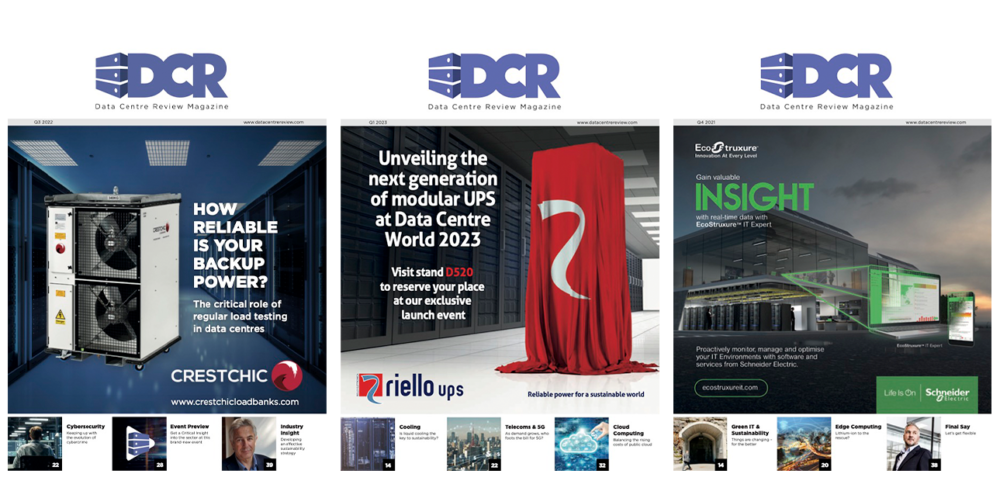Conventional air cooling is no longer enough for the AI data centres of the future, as Peter Huang, Global President of Thermal Management & Data Centre at bp Castrol, explains.
The data centre industry is currently at a critical juncture. The rapid growth of AI workloads is clearly pushing traditional cooling infrastructure to its limits, forcing operators to fundamentally rethink how they manage thermal challenges in their facilities.
Just a decade ago, a 10 MW data centre was considered substantial. Today, facilities supporting AI workloads regularly exceed 100 MW, and this is rapidly becoming the new normal. In fact, the most ambitious projects far exceed this. For instance, Amazon has announced a nuclear-powered data centre campus, which includes plans for expansion to reach 960 MW in total capacity.
Goldman Sachs Research estimates that the ‘hyperscalers’ – tech giants that operate massive, global networks of data centres – spent around $200 billion on AI in 2024, and predicts that this will increase to $250 billion in 2025. Before leaving office, Biden signed an executive order to fast-track development for AI operations across the United States, while under the Trump presidency we have already seen big AI data centre announcements, such as the $500 billion Stargate project.
The need to manage the heat
This unprecedented scale of computing power generates extreme heat that traditional air cooling systems simply were not designed to handle. Traditional air cooling methods typically struggle with anything over 50 kW per rack. The industry urgently needs cooling solutions that can effectively manage this thermal load while maintaining the reliability that operations teams depend on.
Solving the heat problem will have implications beyond being able to meet current computing demands. Efficient thermal management is, in fact, a key factor that will enable the next generation of computing capabilities. The latest generation of AI accelerators perfectly illustrates this challenge. Take Nvidia’s new Blackwell GPU series as an example – the GB200 can consume between 700W to 1,200W of power per chip. When combined into their GB200 NVL72 system, which houses 72 GPUs, a single rack can demand up to 140 kW of cooling capacity. This far exceeds what traditional air cooling can effectively manage.
For data centre engineers and operators, as well as their users, the demands are clear. Technical requirements are changing, which in turn means that the underlying infrastructure must also change. The question is no longer if liquid cooling will be necessary, but how to implement it effectively while maintaining operational excellence and reliability. This requires careful consideration of several key factors:
Reliability and risk management
The primary concern for any data centre operator is uptime. Modern liquid cooling solutions have evolved significantly, with single-phase dielectric coolants offering proven reliability and compatibility with standard server hardware. The latest solutions can effectively manage extreme heat while providing the operational stability that facilities teams require.
Operational efficiency
Data centres can consume up to 40% of their total energy just for cooling, and liquid cooling offers a straightforward path to significantly improved efficiency. By enabling more effective heat transfer, these solutions can help reduce both energy and water consumption – critical considerations for facilities facing increasing pressure on resources.
Implementation and maintenance
One of the most common concerns we hear from operations teams relates to the complexity of transitioning to liquid cooling. However, with proper planning and partner support, the implementation process can be managed without significant disruption. The differentiator is working with experienced providers who understand both the technology and the operational realities of data centre environments.
Future-proofing
As chip manufacturers continue to push the boundaries of computing power, thermal management requirements will only increase. Nvidia’s CEO Jensen Huang has confirmed that upcoming DGX systems will be liquid-cooled, and they have developed specific water-cooled rack specifications to address these cooling challenges. This shift towards liquid cooling for their highest-performance AI processors is just one example of a broader industry trend. The next generation of processors will generate even more heat, making liquid cooling not just an option, but a necessity for maintaining performance and reliability.
Innovation through partnership
For data centre operators, the transition to liquid cooling requires careful planning and the right partnerships. Besides providing advanced fluids and infrastructure, it will become important to partner with organisations that can provide comprehensive testing and validation of solutions before deployment, then follow through with ongoing support and maintenance during deployment. In order to keep up with new technologies, data centres will need to invest in R&D and continue to evolve quickly in response.
It is becoming evident across the industry that liquid cooling will play an increasingly vital role in making the next generation of computing possible within the limits of our resources. Companies that embrace this technology now will be better positioned to support the demanding workloads of tomorrow while maintaining the reliability and efficiency their organisations depend on.


